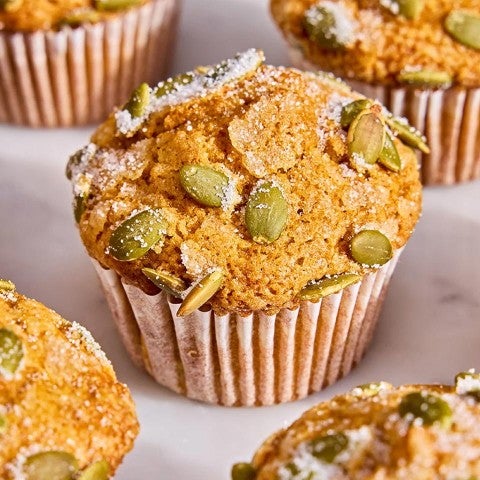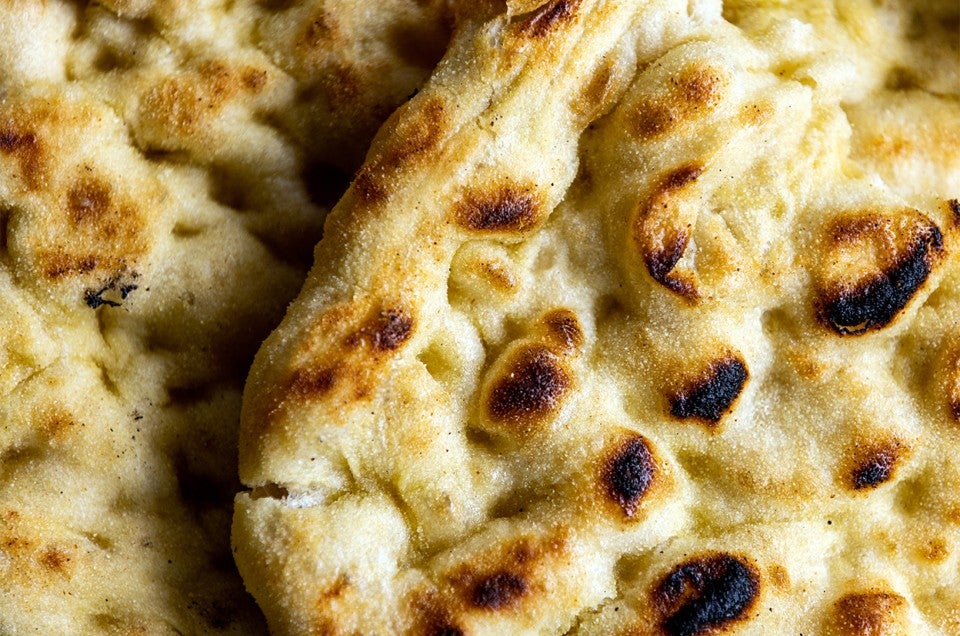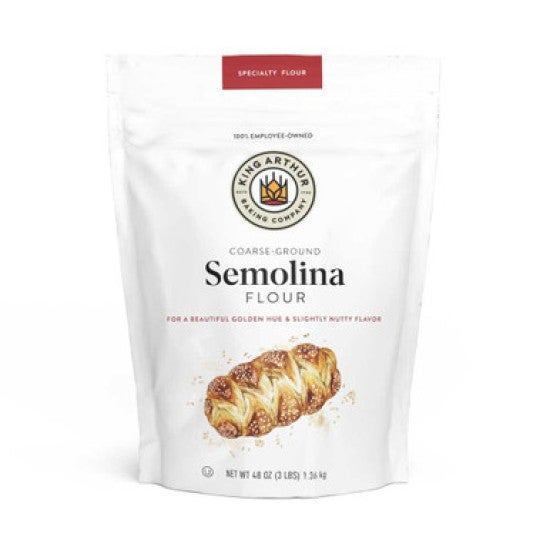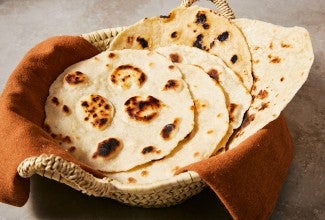-
To prepare the dough: Weigh your flour; or measure it by gently spooning it into a cup, then sweeping off any excess. In a large bowl or bowl of a stand mixer fitted with the flat beater attachment, combine the flour, water, yeast, olive oil, and salt. Mix until a shaggy, sticky dough forms without any dry, floury patches. This should take less than 1 minute. Scrape down the sides to gather the dough into a rough ball. Cover and set aside.
-
After 30 minutes, use a bowl scraper or your wet hand to grab a section of dough from one side, lift it up, and press it down to the middle to seal. Repeat, turning the bowl 90° between each stretch, until the dough won’t elongate easily, about 8 to 12 times total. This process, which is called a bowl fold, replaces kneading.
-
Cover the bowl and let the dough rest at room temperature, undisturbed, for at least 30 minutes or for up to 3 hours. This forgiving dough will be fine with more or less time, but a longer rise will make shaping easier.
-
Turn the dough out onto a lightly floured work surface. Gently deflate it and divide it in half (about 270g each) or into quarters (about 135g each) for small flatbreads.
-
Shape each piece of dough into a rough ball by pulling the edges into the center. Turn the dough seam-side down, cover, and let rest for at least 20 minutes and up to 1 hour, until it’s relaxed enough to stretch and shape.
-
If using a gas grill, preheat to 350°F to 400°F, then adjust some burners to medium-low and others to medium-high. If using a charcoal grill, set up two-zone grilling by banking the coals towards one side of the grill, which will create a hot and less-hot section. Alternatively, see "tips," for instructions on how to cook these flatbreads on the stovetop or in the oven.
-
To make the basting oil: In a small bowl, whisk together the olive oil and garlic. Set aside.
-
To stretch the dough: Dust a pizza peel, thin wooden cutting board, or clean work surface with semolina flour or cornmeal. Transfer one ball of dough to the prepared surface, and sprinkle the top with flour. Use your fingertips to gently depress the round, then gently stretch, pull, and flatten the dough into a 10" round or into a 5" round if making 4 smaller flatbreads. Repeat with the remaining dough.
-
To prepare the grill: Use a grill brush to remove any residue and clean the grates. For extra protection against sticking, use tongs to rub a wadded or folded paper towel coated in cooking oil over the grates.
-
To grill the flatbread: Working with one flatbread at a time, brush one side of the prepared dough with the basting oil, and place it oil-side down onto a medium-hot section of the grill. Cook for 3 to 4 minutes, until the bottom crust is golden brown. Watch closely and move as necessary to achieve your desired color. Brush the top with oil and then turn the bread over and cook for an additional 3 to 4 minutes, again watching closely and moving as needed, until the bread is firm, golden brown, and charred in spots. Move your flatbread to the hotter section of your grill to brown any lighter sections, if needed.
-
Remove the flatbread from the grill and brush with extra basting oil. Serve the flatbread with your favorite dips and accoutrements: we like whipped feta, burrata, olives, roasted red peppers, hummus, romesco, or muhummara. You can also top the flatbread like a pizza: try ricotta and chopped fresh tomatoes, or charred corn kernels, arugula, and shavings of Parmesan.
-
Storage information: The grilled flatbread is best the day it’s made. Store leftover flatbread, untopped and well-wrapped, at room temperature for up to two days.





















